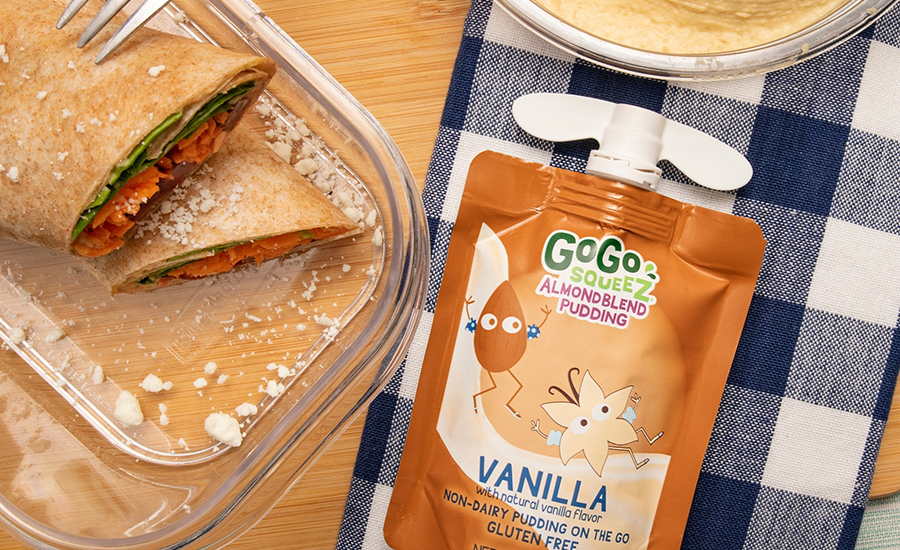Appealing to organic-conscious consumers requires more than simply replacing conventional ingredients with organic-certified counterparts. Formulating and processing to align with the National Organic Program of the USDA can be especially onerous when producing convenient, increasingly sophisticated snacks that will delight all consumers, not just consumers of organic products.
This often requires strategic formulation or reformulation to shorten the list of ingredients while creating an opportunity for the snack product to appeal more to the target consumers with health benefits, such as gut health, high dietary fiber, or immune support, as well as with sustainability and lifestyle claims.
That Snacking Habit
Breakfast items like cereals, omelets, and hash browns have become popular as snacks. Meeting this trend from the other direction, such comfort and enjoyment, coupled with convenience and variety, are increasingly repositioning snacks as replacements for meals. This is especially true of breakfast. Snack consumption between 6:00-10:00AM reportedly has grown 42% in the past decade, and 40% of consumers reported replacing at least one main meal with snacks in 2021, up from 30% ten years ago, all according to research group Mintel.
People buy snacks for several reasons, but overwhelmingly for enjoyment. The 2022 “State of Snacking” report jointly developed by Mondelez, Inc. and The Harris Poll found that 78% of consumers buy snacks to reward themselves, and 77% because snacks provide a sense of comfort. Those percentages were much higher among younger generations, with 85% of Millennials citing these reasons. Snack foods are soothing, entertaining, pleasant, and affordably comforting at times of anxiety and uncertainty.
In addition to snacking more, younger adults habitually snack late at night, Mintel noted. Such late-night snackers prioritize natural and organic ingredients because health and wellness are important to them. This is an opportunity for snack makers to offer products that deliver contentment and satisfy after-dark hunger pangs while also providing full nutrition.
Bars remain strong in the snack category, and this is especially true of organic versions. The snack bar market size was valued at almost $23 billion in 2020 and is projected to top $38 billion by 2028, reflecting a compound annual growth rate of more than 6.6%, according to Verified Market Research.
Rice Two Ways
Choosing organic ingredients for snacks to match the quality and sophistication of mainstream snacks will require ingredients with multifaceted functionality and a thorough understanding of their role in defining the quality of the finished product. While this can seem daunting for a category already perceived as pricier than that for mainstream products, adding value does not always add to the final cost.
In some cases, the baseline can be lowered to make organic snacks more affordable. Rice, for example, can rise to the occasion in several applications with its versatility. This basic ingredient can be an effective and familiar organic alternative to undesirable ingredients, such as modified starches, colorants, and allergenic ingredients like soy and dairy.
In crispy/crunchy snacks, the type and source of starch affect the hardness of the initial bite, the volume of the sound the snack makes when bitten or broken, how it breaks (cleanly like an arrowroot cookie or in shards like a hard pretzel), and how it forms and reforms in the mouth during chewing.
High-amylose organic rice can contribute crispness in texture and is ideal for thin children’s snack crackers in that it does not crumble. High-amylopectin rice is ideal for puffed snacks as well because it can expand significantly and melt and adhere to the hands instead of shattering and making a mess.
The inherent smallness in granule size of rice flour also contributes to silky, rich, and creamy textures in cookie fillings and snack puddings. Rice flour is a cost-effective, allergen-free alternative to more expensive ingredients like cream or milk derivatives.
The Color of Rice
Colorants always have posed a challenge for organic product developers, especially when it comes to snacks. Snack products, especially sweet snacks, rely more strongly on visual appeal to convey an indulgent treat. Pigmented rice flours have demonstrated a double advantage compared to standard vegetable coloring. They add additional fiber to a base of white polished and milled rice to not only achieve an even shade in the desired hue but also to add texture and allow a fiber claim.
The fiber in rice bran does not harden the finished product as other plant fibers tend to. Rice also offers bioactive components, including vitamin B complex, tocopherols, tocotrienols, and oryzanols for immune health and reduced risks of heart disease and cancer. The large amount of naturally occurring phenolic acids in pigmented rice can enhance flavor during extrusion, while the proanthocyanidins, catechins, and epicatechins in red rice, and anthocyanins in black and purple rice, offer rich hues in a better-for-you package.
Upcycling for Health
Fruit-based snacks are a source of healthful phytonutrients such as polyphenols and carotenoids, as well as fiber—including prebiotics—for gut health. “Carrot, blueberry, and persimmon waste from jam and juice operations offer a nutritious and upcycled alternative to fresh and cooked fruit purées,” notes Kaitlin Mogentale, founder and CEO of Pulp Pantry, LLC.
Pulp Pantry crafts snacks from organic vegetable fiber or pulp, leftover from cold-pressed juice processing. The upcycling movement only has room to grow—according to researchers at the Boston Consulting Group, the value of wasted food globally is around $1.2 trillion. “More than 133 billion pounds of food was wasted in 2020, amounting to more than $161 billion dollars in lost value in the US alone,” Mogentale adds.
The staggering numbers, coupled with increasing global food insecurity, drove Mogentale to upcycle these overlooked resources of fruit and vegetable juice pulp into wholesome, everyday snacks that make it convenient to eat more servings of vegetables and fiber. Pulp Chips are vegetable-based, tortilla-style chips made from a range of fresh, upcycled vegetables as the first ingredient with a full day's serving of fiber in each package.
Room to Grow
Successful organic snacks can be as simple as Patagonia, Inc.’s Sol Simple Organic Dried Pineapple. They are single-ingredient favorites—chewy, tangy-sweet rings of sun-dried organic fruit, without any added sugars or preservatives. They also can be simple and support a cause.
One example is Eat the Change, LLC’s Hickory Smokehouse Mushroom Jerky, an organic-certified snack from upcycled imperfect mushrooms that are smoked using branches and remnants of hickory wood. Made by marginalized communities, they are free from GMOs, gluten, soy, artificial colors, and preservatives.
Organic snack products also can be a more elaborate take on a cookie, cracker, puffs, chips, or nutrition bar. The Kellogg Co.’s Kashi line of Pure Organic products is a good example. The company’s Layered Bars are made with fruit juices and purées, and its Baked Crackers are made with 100% real cheese, carrot purée, and mushroom powder, thereby providing a good source of vitamin D.
The global organic snack market is growing at a double-digit rate, and snacks themselves are expanding and diversifying as nontraditional items such as vegetables and animal proteins are folded into snack formulations. The concurrent and equally aggressive growth of the organic channel means that one thing is certain: Consumers will continue to favor snacks that are not only convenient but better for you, and organic ingredients check all the right boxes.
Kantha Shelke, PhD, CFS, is a senior lecturer at Johns Hopkins University and principal of Corvus Blue LLC, a Chicago-based food science and research firm specializing in industry competitive intelligence, expert witness services, and new product/technology development and commercialization of foods and food ingredients for health and wellness. Contact her at kantha@corvusblue.net.
Billion Dollar Babies
The snack aisle displays a spectrum of products catering to consumer behaviors that range from habitual mindless indulgence to mindful and healthful choices based on ingredients and label claims. Health, well-being, and environmental concerns are increasingly influencing consumers’ choices in retail snack aisles and driving innovation. Innova Market Insights reported that the use of organic ingredients in food and beverage launches is increasing globally, at a +5% year-over-year growth rate, comparing 2020 and 2021 launches. Meanwhile, Maximize Market Research estimated the value of the organic snacks market alone at nearly at $11B in 2021, and projects growth of the global market at a CAGR of 15.4% to a value of around $35B by 2029.
New Teeth for Organic Rules
As of last month (March 2023), makers of organic snacks and other products outside the country will have to meet a higher bar for US certification. The USDA’s Strengthening Organic Enforcement (SOE) final rule, which just went into effect, adds increased oversight of foods labeled as “organic.” The move was necessary to combat food fraud as well as to increase confidence in its organic seal. The SOE rule requires processors, brokers, and traders to ensure that all imported organic foods are certified and demonstrate “more robust recordkeeping, traceability practices, and fraud prevention procedures.”
Raising the Bar
Snack bars have evolved into specialized nutrition bars, protein bars, meal-replacement bars, whole food bars, and energy bars. These are snacks that offer a convenient source of portable nutrition for health and flavor.





















